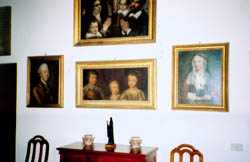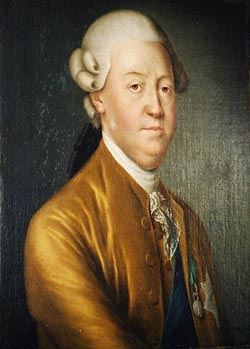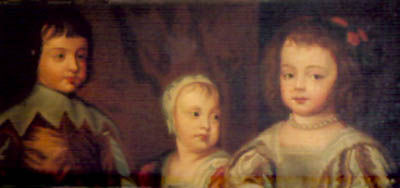 |
 |
 |
 |
 |
 |
 |
 |
 |
|
A Jacobite Gazetteer - Rome
Convento di San Clemente
Since 1677 a priory of the Irish Dominicans has been located at Via Labicana 95 next to the Basilica di San Clemente. The Irish Dominicans had a long association with the Stuarts and their court. King James III and VIII visited the priory in May 1717. 1 One of the Irish Dominicans, John Brown, was confessor to James and one of the few witnesses of James' wedding to Princess Clementina Sobieska at Montefiascone; Brown lived at San Clemente from 1725 to 1726. 2 In 1744 the Prince of Wales (later King Charles III) visited the Dominicans of San Clemente "before leaving Rome for Scotland when they entertained him in their garden". 3 On April 8, 1766, the then prior of San Clemente, Patrick Kirwan, was deposed and sent into exile by the Dominican General; a week previously, on April 1, he had, contrary to the pope's decree, received King Charles III with royal honours at the Convent of San Sisto. 4 On the long wall of the main reception room of the priory there are three oil portraits of the Stuarts. On the left is an oil portrait of King Charles III (61 cm high, 41 cm wide); it is sometimes wrongly described as being of King James III and VIII. 5 Charles wears the blue sash and the star of the Most Noble Order of the Garter; he also wears another badge. In the centre is an oil portrait of the three eldest children of King Charles I (Charles II, James II and VII, and Mary); this is one of several copies of the painting commissioned by the children's mother Queen Henrietta Maria, and painted by Anthony Van Dyck. The original painting is now in the Galleria Sabauda in Turin. On the right is an oil portrait of Queen Clementina (61 cm high, 41 cm wide). She wears a sheer veil and a stole of ermine. At her left is a royal crown. In her hand she holds a book (presumably a prayer-book). The painting seems to be a copy of a 1727 portrait of Queen Clementina by Antonio David. 6 The priory is not open to the public. Special permission is required in order to see the portraits. (Telephone: 39.06.70451018).
Notes 1 Bryan Bevan, King James the Third of England: A Study of Kingship in Exile (London: Robert Hale, 1967), 172. 2 Leonard E. Boyle, San Clemente Miscellany I: The Community of Ss. Sisto e Clemente in Rome, 1677-1977 (Rome: Apud S. Clementem, 1977), 39 and 45. 3 Alice Shield, Henry Stuart, Cardinal of York, and His Times (London: Longmans, Green, 1908), 266. 4 Ibid., 260-261. 5 Amy Vitteleschi, A Court in Exile (London: Hutchinson, 1903), I, plate facing page 144, describes it as of the "Chevalier de St. Georges" (i.e. King James III and VIII). Alice Shield, 266, says that the "portrait is not of James but of Charles in about his sixtieth year, and a good likeness". Donald Nicholas, The Portraits of Bonnie Prince Charlie (Maidstone: Clout & Baker, 1973), 40, says that "it is, however, obviously of Charles". 6 Cf. Edward Corp, The King Over the Water: Portraits of the Stuarts in Exile after 1689 (Edinburgh: Scottish National Portrait Gallery, 2001), 67. David was born in Venice. Between 1717 and 1735 he painted over a dozen portraits of King James III and VIII, Queen Clementina, King Charles III, and King Henry IX and I, as well as several other portraits of members of the Jacobite court in Rome. The original 1727 David portrait of Queen Clementina (there are two others: a 1719 portrait now at Lambeth Palace, and a 1722 portrait now in a private collection) is 74 cm high and 61 cm wide; it is in a private collection. Image 1 (Reception Room): © Noel S. McFerran 2001. Image 2 (Portrait of King Charles III): © Noel S. McFerran 2001. Image 3 (Portrait of Queen Clementina): © Noel S. McFerran 2001. Image 4 (Children of King Charles I): © Noel S. McFerran 2001.
This page is maintained by Noel S. McFerran (noel.mcferran@rogers.com) and was last updated March 14, 2007. |



